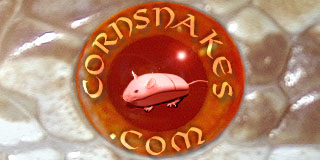The Public Health Service Policy on Humane Care and Use of Laboratory Animals, Animal Welfare Act and the Guide for the Care and Use of Laboratory Animals require the IACUC to review and approve the proposed methods of euthanasia. The proposed methods must be consistent with the recommendations of the 2000 Report of the American Veterinary Medical Association (AVMA) Panel on Euthanasia, or succeeding revised editions, unless there are scientific justifications for alternative methods. The AVMA Panel categorizes each method of euthanasia as acceptable (methods which consistently produce a humane death when used as the sole means of euthanasia), conditionally acceptable (methods which by the nature of the technique or because of greater potential for operator error or safety hazards might not consistently produce humane death or are methods not well documented in the scientific literature) and unacceptable (methods deemed inhumane under any conditions or that the panel found posed a substantial risk to the human applying the technique).
Euthanasia is the act of humanely killing animals by methods that induce rapid unconsciousness and death without pain or distress. In evaluating the appropriateness of methods, some of the criteria that should be considered are ability to induce loss of consciousness and death while minimizing animal pain, distress, or anxiety; reliability; irreversibility; time required to induce unconsciousness; species and age limitations; compatibility with research objectives; and safety of and emotional effect on personnel.
Unacceptable Methods
Air embolism - Air embolism may be accompanied by convulsions, opisthotomus, and vocalization. If used, it should be done only in anesthetized animals.
Blow to the head - Unacceptable for most species.
Burning - Chemical or thermal burning of an animal is not an acceptable method of euthanasia.
Chloral hydrate - Unacceptable in small mammals.
Chloroform - Chloroform is a known hepatotoxin and suspected carcinogen and, therefore, is extremely hazardous to personnel.
Cyanide - Cyanide poses an extreme danger to personnel and the manner of death is aesthetically objectionable.
Decompression - Decompression is unacceptable for euthanasia because of numerous disadvantages including:
Many chambers are designed to produce decompression at a rate 15 to 60 times faster than that recommended as optimum for animals, resulting in pain and distress attributable to expanding gases trapped in body cavities.
Immature animals are tolerant of hypoxia, and longer periods of decompression are required before respiration ceases.
Accidental recompression, with recovery of injured animals, can occur.
Bleeding, vomiting, convulsions, urination, and defecation, which are aesthetically unpleasant, may develop in unconscious animals.
Drowning - Drowning is not a means of euthanasia and is inhumane.
Exsanguination - Because of the anxiety associated with extreme hypovolemia, exsanguination should be done only in sedated, stunned, or anesthetized animals.
Formalin - Direct immersion of an animal into formalin, as a means of euthanasia, is inhumane.
Household products and solvents - Acetone, quaternary compounds (including CCl4), laxatives, clove oil, dimethylketone, quaternary ammonium products (i.e. Roccal D Plus), antacids, and other commercial and household products or solvents are not acceptable agents for euthanasia.
Hypothermia - Hypothermia is not an appropriate method of euthanasia.
Neuromuscular blocking agents (nicotine, magnesium sulfate, potassium chloride, all curariform agents) - When used alone, these drugs all cause respiratory arrest before loss of consciousness, so the animal may perceive pain and distress after it is immobilized.
Rapid Freezing - Rapid freezing as a sole means of euthanasia is not considered to be humane. If used, animals should be anesthetized prior to freezing.
Strychnine - Strychnine causes violent convulsions and painful muscle contraction.
Stunning - Stunning may render an animal unconscious, but it is not a method of euthanasia (except for neonatal animals with thin craniums). If used, it must be immediately followed by a method that ensures death.
Source:
http://www.siu.edu/~iacuc/ROD_EUTH.HTML#UN